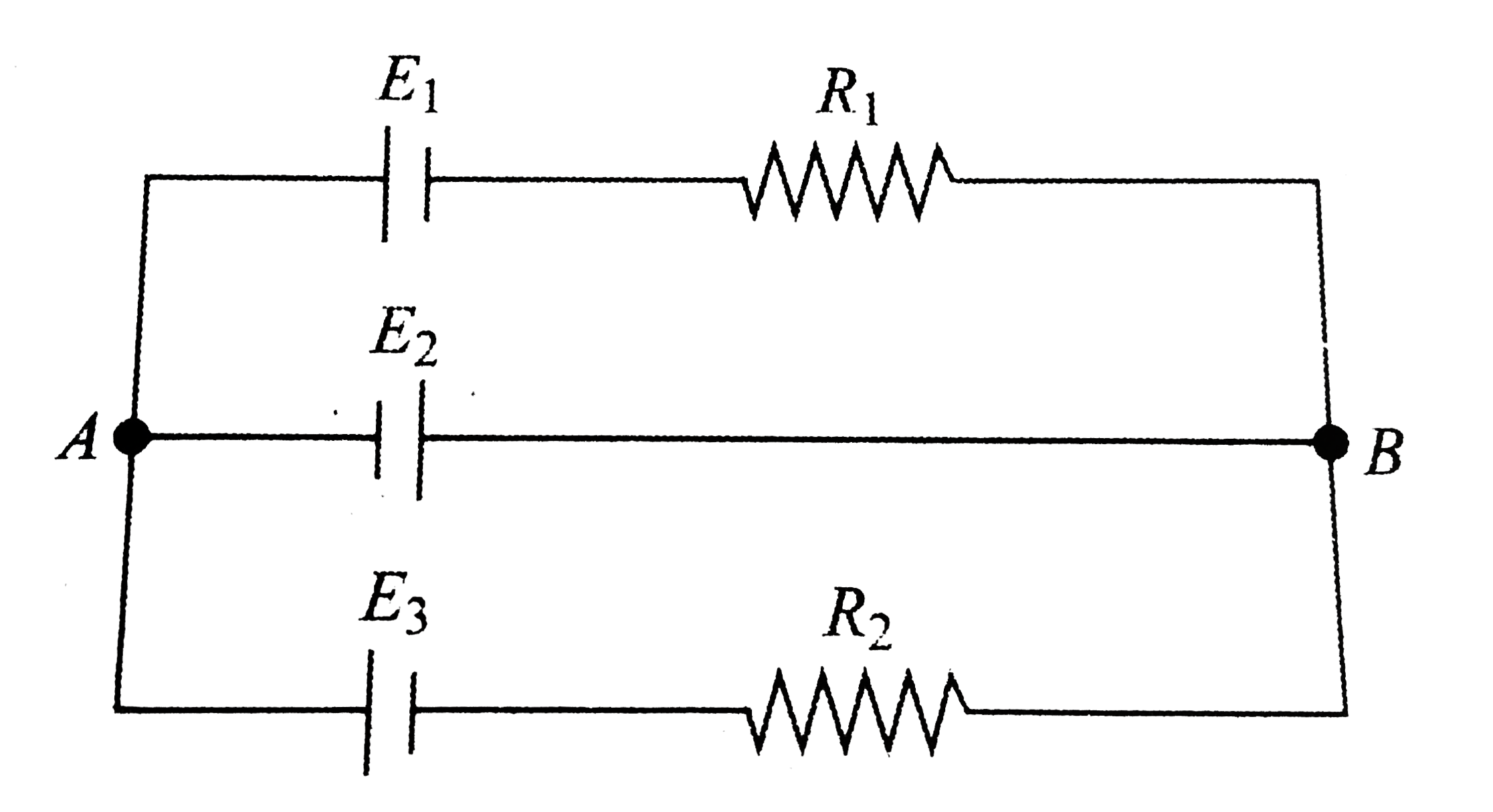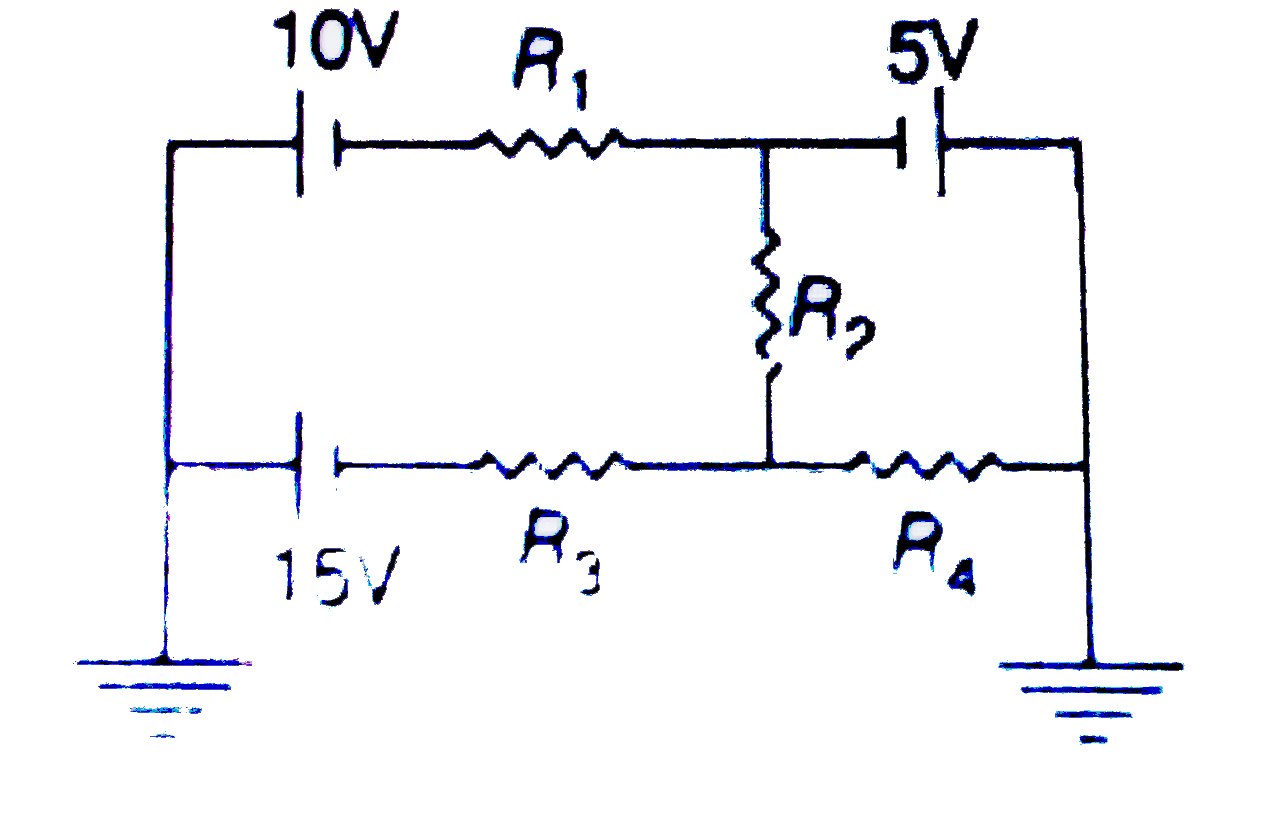In the circuit shown in fig. E1=3 volt,E2=2 volt,E3=1 vole and R=r1=r2=r3=1ohm.
(i) Find potential difference in Volt between the points A and B with A & B unconnected.
(ii) If r2 is short circuited and the point A is coneted to point B through a zero resistance wire, find the current through R in ampere.

Applying Kirchoff.s loop law to mesh PLMQP and PLMQONP in the figure shown below, we have
i1r1+i2r2=E1−E2ori,+i2=1...(i)
i1r1+i3r3=E1−E3ori−(1)+i−(3)=2...(ii)AtP,i2+i3=i1ldots(iii)
On solving (i), (ii) and (iii) i1=1amp.i2=0amp.i3=1amp

Since no current is drawn along the branch APthereforeVAB=VPQ
Potential difference across PQ,
VPQ=E1−i1r1=2Votl
(b) The figure shows the circuit when point A is connected to point B and r2 is short-circuited.Applying Kirchoff.s junction rule at P, we geti=i1+i2+i3ldots(iv)
Applying Kirchoff.s law to mesh ABMLA i−(1)r1=E1−E2ori1=1amp
Applying Kirchoff.s law to mesh ANOQMLi1r1−i3r3=E1−E3ori1+I2+I3=2...(v)
From above equations I1=1amp,i2=2amp,i3=−1amp
.lamp (direction of current is opposite)
So, current through resistor R will be l=I1+l2+I3=2amp

Similar Questions
Calculate the effective resistance between the points A and B in the circuit shown in Fig.

View SolutionIn the circuit shown in figure ,(ε)1=3V,(ε)2=2V,(ε)3=1Vandr1=r2=r3=1(Ω).Find the potential difference between the points A and B and the current through each branch.

View SolutionIn the circuit in figure E1=3V,E2=2V,E3=1V and R=r1=r2=r3=1Ω

Find the potential differece between the points A and B and the currents through each branch.
View SolutionFor the circuit shown, with R1=1.0Ω,R2=2.0Ω,E1=2V and E2=E3=4V, the potential difference between the points 'a' and 'b' is approximately (in V):

View SolutionIn the circuit shown in figure

E1=10V,E2=4V,r1=r2=1Ω and R=2Ω.
Find the potential difference across battery 1 and battery 2.
View SolutionIn the circuit shown in figure

E1=10V,E2=4V,r1=r2=1Ω and R=2Ω.
Find the potential difference across battery 1 and battery 2.
View SolutionIn the given network of ideal cells and resistors, R1=1.0Ω,R2=2.0Ω,E1=2V and E2=E3=4V. The potential difference between the point a and b is

View SolutionIn the circuit shown here, E1=E2=E3=2V and R1=R2=4ohms. The current flowing between point A and B through battery E2 is

View SolutionIn the circuit shown in fig. 5.265, E1=E2=E3=2V and R1=R2=4Ω. The current flowing between points A and B through battery E2 is

View SolutionIn the circuit shown in figure

Current through R2 is zero if R4=2Ω and R3=4Ω In this case
View Solution
